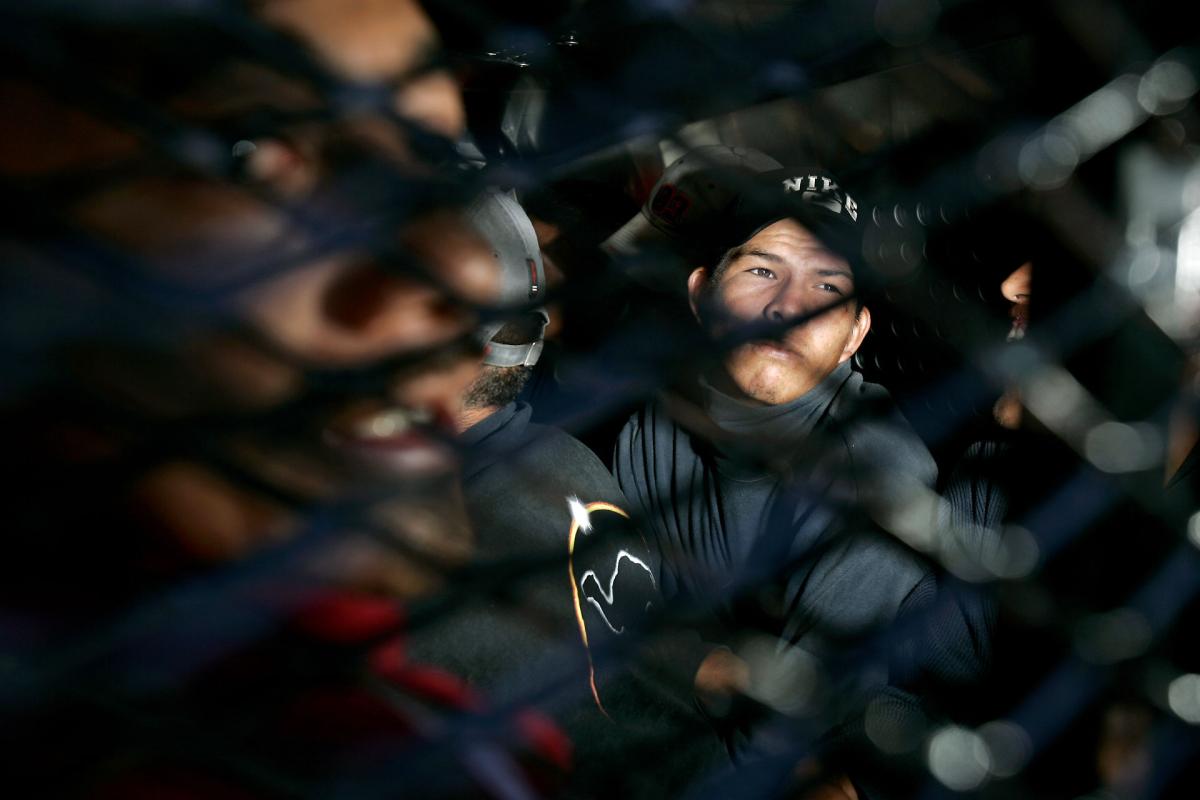
Unmasking the human smuggler
What images go through your mind when you hear the word ‘human smuggler’? If you type the words into the search engine that aspires to contain all our shared knowledge, Google fills the screen with images that show overcrowded boats in piercing blue seas weighed down by their human cargo; never-ending lines of people walking along train tracks, freeways and across deserts; people being escorted by border patrols – pictures of fences, handcuffs and barbed wire. These images tell a story: the story of a sea of humans on the move, and of those who try to stop the flow. If you read the accompanying headlines, they speak of a billion-dollar economy of human smuggling run by transnational criminal networks.
These were more or less the same images and stories that Gabriella Sanchez encountered when, as a young legal clerk, she was assigned the task of interviewing undocumented migrants charged with migrant smuggling on the US–Mexico border. But being a migrant of Mexican descent herself, the image of the criminal human smuggler, exploiting desperate people’s search for a better life, just didn’t sit right with her, and what she found in her interviews during her seven-year stint as a criminal investigator was a totally different story – a story that would ultimately lead her on a completely new path:
Growing up, all of my relatives had at some point migrated to the US with the support of a broker or a guide. But the relationship that we had with these brokers and guides was always very personal...
‘I’m from a migrant family in central Mexico – people who started migrating into the US in the 1940s. In our communities, migration, especially among men, was socially expected – it was part of your path in life. Growing up, all of my relatives had at some point migrated to the US with the support of a broker or a guide. But the relationship that we had with these brokers and guides was always very personal, at times even intimate, because they were friends, family members, neighbours, people we had strong ties to. There was a social obligation to care for each other’, she explains in a Teams chat from her current confinement in a Copenhagen apartment.
Gabriella Sanchez is a visiting researcher at DIIS for the next two months, and even though COVID-19 sets some limitations, the scope of the visit is to work together with DIIS migration researchers on how mobility is being criminalised as smuggling within Europe, and on how migrants’ journeys across the Mediterranean into Europe are facilitated.
Among coyotes
Following in her family’s footsteps Gabriella Sanchez herself moved to the US from Mexico, aspiring to study anthropology someday. However, in her family’s eyes, travelling by plane and furnished with a visa didn’t quite measure up to the ‘real’ migration experience of her many relatives and friends who had travelled with coyotes – the colloquial term used to designate the men and women who facilitate migrants’ journeys throughout the Americas.
As a student in Arizona, on the US–Mexico border, she was offered a job in the criminal justice system interviewing Spanish-speaking detainees. Here she witnessed first-hand how the facilitation of irregular border crossings was being labelled legally as ‘migrant smuggling’ by local politicians:
‘When I first got the job, there was a strong focus on fighting drug trafficking along the border; but gradually local politicians fed into the long-standing racial tensions over the presence of Mexican migrants in Arizona, and began to introduce legislation that would allegedly prevent the abuse of people crossing the border by prosecuting their smugglers. Part of that involved, as migration researcher Julien Brachet says, manufacturing smuggling: whereby local law enforcement subjectively, at random, decided which offences constituted smuggling and who their perpetrators, the so-called ‘smugglers’, were. I was assigned to one of the units that was part of this initial process’, she recalls.
It was easier to blame smugglers than to admit that the deaths and the violence were derived from border enforcement and immigration control
Back then Arizona had become the main point of entry for migrants into the United States when the historical routes through California and Texas were shut down through enforcement. Efforts to close the more traditional pathways didn’t mean that the number of migrants trying to enter decreased – rather the strategy funnelled people into Arizona’s arid desert where many got lost and died. The deaths, however, were not blamed on border enforcement, but on smugglers:
‘What I remember the most from this time is that whenever a case came up and the sheriffs spoke to the media, they always referred to smugglers in very specific ways: first of all, they were male; second, they were Mexican. They were violent, raped women, took migrants’ money, were part of organised crime and had ties to drug trafficking organisations in Mexico. By gendering and racialising smugglers in this way it was easier to dehumanise them, and to attribute to them the violence migrants encountered in their journeys. It was easier to blame smugglers than to admit that the deaths and the violence were derived from border enforcement and immigration control’.
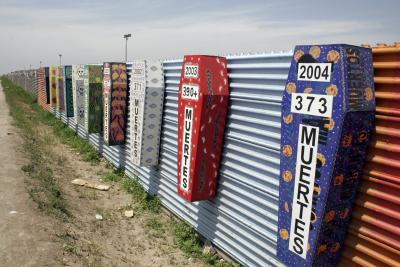
But the people Gabriella Sanchez met in the detention centres in Arizona did not fit that profile. In fact, those criminalised and prosecuted as smugglers were primarily poor people working on their own, and very few of them were organised in any way:
‘The people I talked to were irregular migrants, indigenous men and women from the border who had facilitated a segment of a migrant’s journey; some had driven someone through a checkpoint or had welcomed them into their homes overnight; there were women, often elderly, who had fed a migrant in exchange for some cash. Some played no other role than collecting fees, while others acted as lookouts to prevent migrants from being detected by police or kidnapped by gangs who, at that time, began to proliferate in the desert. There was violence, yes, and at times it took harrowing forms, but it was uncommon. Most acts of extreme violence did not occur at the hands of the people who facilitated crossings’.
With each one of her interviews Gabriella Sanchez came closer to a realisation that there was something skewed with the way the so-called smuggling market was depicted and dealt with from a legal and political point of view; a realisation that ended up forming the very basis for her future life as a researcher – albeit unconsciously at first:
People’s testimonies allowed me to see that the practice of criminalising the poor that I had witnessed in my time in Arizona, was widespread
‘I never thought I was researching smuggling. When I started my PhD my motivation was simply the desire to show what was happening to Mexican migrants in detention and how the criminal justice system treated them. I had in fact decided to leave my job to pursue my PhD, after having worked there for seven years, because I realised that I too was part of the mechanism that was allowing for their prosecution’.
Her initial research on the US–Mexico border eventually led her to the Middle East and Australia and, most recently, to North Africa where, despite the very diverse geographical and historical contexts, she found several common denominators when it came to smuggling:
‘People’s testimonies allowed me to see that the practice of criminalising the poor that I had witnessed in my time in Arizona, was widespread, and that the ways in which border crossings were organised were also very similar: they were often community-based and relied on social ties of reciprocity and care’.
Moreover, Gabriella Sanchez discovered that most of the people involved also had a similar profile. They were marginalised people, indigenous people and communities, who were taking advantage of their knowledge of the landscape, and at times of their personal connections, in order to earn a bit of money through facilitating migrants’ journeys. All of these common features intrigued her:
‘I remember being surprised by how those involved in smuggling, regardless of the location, relied on similar strategies. But as I took a closer look I realised, rather, that policies to control migration developed in the global North were the ones dictating what smuggling was. The basic premise of smuggling and its tactics are the same. But the way it was defined and the implications of this came from somewhere else.´
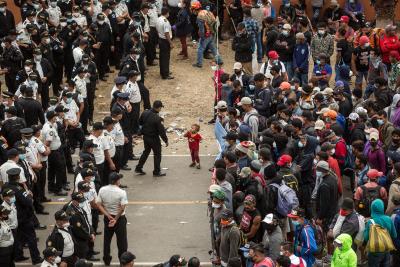
Chasing whales in a sea of small fish
Moreover, looking at official databases or case law involving people prosecuted for human smuggling cast further doubt on the story of vast criminal networks that exploit peoples’ desperation:
‘Once you start looking at smuggling cases you see that many of the people who are prosecuted for the offence facilitated the journeys of friends and family members. Many cases neither seek nor generate any kind of profit; there are plenty of examples in EU case law involving women who were charged for attempting to bring their children into safety, or living with their undocumented spouses. While more research is needed, these cases seem to be more prevalent that those involving organised gangs’.
This begs the question: does this simply mean that the organised networks are just better at avoiding getting caught? In Gabriella Sanchez’s mind the answer is clear:
‘I get this question all the time. I am “kindly” reminded by law enforcement colleagues that the hope is that one day law enforcement will no longer have to catch the “small fish” but rather “the big ones”. But my reply is this: “Has it occurred to you that, if that is the case, then counter-smuggling efforts are inadequate for they consistently yield the so-called small fish? Or perhaps this is the very indication that smuggling does not prosper in hierarchical, highly-organised settings?’.
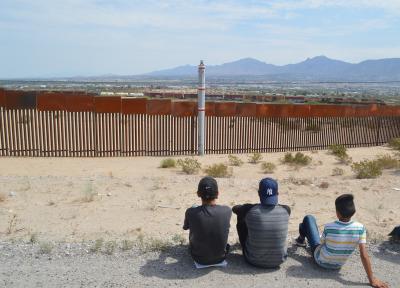
That, however, doesn’t mean that there aren’t groups which are more organised, nor that people aren’t connected, but when the notion of network and interconnectedness is used so liberally by law enforcement and politicians alike, then anything can be a network, and this again allows for the criminalisation of even more people, Gabriella Sanchez says:
‘The fact that a migrant accepts to work off her fees by caring for the child of a smuggler does not make her part of a network. Piloting a boat from Libya or Tunisia when you lack the money to pay for your passage does not make you part of a network. But to talk about smuggling as “networks” does generate a lot of hype – and fear’.
Who benefits?
Given the fact that they don’t seem to match reality, where do these stories of vast criminal networks stem from? Moreover, assuming that they are hugely exaggerated, who benefits from holding on to these stories? According to Gabriella Sanchez it’s because they are both easy and lucrative:
‘These claims first of all support law enforcement, yes. But they also fuel anti-immigrant sentiment. If I go to court and say, “I arrested a sick, poor, elderly woman for charging 50 euros a night to shelter a migrant in transit” that doesn’t have the same punch as saying, “This woman is the head of an international operation smuggling migrants for a potentially vast profit.” Not if I want support from the state or from a public who are very concerned about the irregular presence of migrants from Africa, or the Middle East.
It’s easy to prey on our fears. But what is very important to notice is that none of the categories that are used to talk about smuggling or irregular migration are neutral: they are loaded with notions of class, of race, of difference. The discourse of smuggling is not about European people: the threat is constructed as black, as brown, as African, as Muslim; as foreign’.
Closing borders
If the ability to move was granted equally to all, if all people regardless of their race, class, gender or citizenship, had equal access to movement, there would be no need for smugglers
So how does the future look for those seeking better opportunities through migration? Will the recent border closings as a response to a raging global pandemic provide fewer images of overcrowded boats or caravans in the desert? According to Gabriella Sanchez the answer is a definite no. On the contrary: if you limit people’s ability to legally enter a country, many will find other ways to reach their destination. In that sense the very business of human smuggling is a product of the restriction of movement:
‘Human smuggling is the result of the lack of safe, legal paths for mobility. If the ability to move was granted equally to all, if all people regardless of their race, class, gender or citizenship, had equal access to movement, there would be no need for smugglers.
Getting a passport or a visa to enter a specific country is not something people in the global North usually give much thought, but for millions around the world the requirements to get a passport or a visa are quite often unattainable. Insurmountable. I can assure you that if you or I were held to the same standards for a visa we would not fulfil them, we would be turned down’.
Moreover, people’s desire to seek better opportunities seems unaffected by the closing of borders. The current global crisis caused by the COVID-19 pandemic illustrates this with disturbing clarity. During the summer of 2020, the numbers of people departing from Tunisia, Algeria and Morocco irregularly by sea into Italy and Spain rose drastically and the route from West Africa and Morocco to the Canary Islands reopened with lethal consequences.
In the Americas, there are signs that economic precarity, natural disasters, gender-based violence, organised crime, and the potential for immigration reform with the new Biden administration may lead to an increase in migration despite the fact that the US–Mexico border continues to be closed to non-citizens and asylum seekers alike.
‘The pandemic gave governments the excuse they needed to shut down their borders. But looking back now, one year later, we can see that that has not stopped migration. In fact, the demand for smuggling services has increased in some corridors. This just goes to show that not even a pandemic will be able to contain the desire or the need to move’.
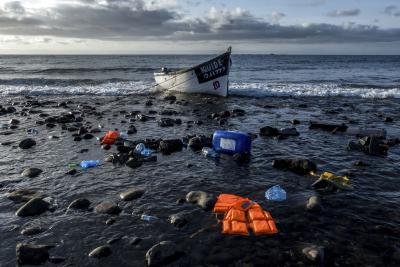
Gabriella Sanchez PhD is a socio-cultural anthropologist. She is currently a visiting senior researcher at DIIS’s Migration and Global Order Unit. She was previously a fellow at the Migration Policy Centre (MPC) of the European University Institute.
She has held academic posts at the University of Maryland, the Hebrew University of Jerusalem, Wellesley College, Monash University, The Catholic University of America, and the University of Texas in El Paso.
She is the author of Human Smuggling and Border Crossings (Routledge 2016) and co-editor of the 2018 Special Issue on Migrant Smuggling of The Annals of the American Academy of Political and Social Sciences.
Her current research examines the participation of indigenous and tribal groups in the facilitation of migrant journeys. She is also completing a policy study based on fieldwork carried out in Algeria and Morocco and on the Libya–Tunisia border, on the criminalisation of irregular migration.
At DIIS she is preparing, alongside Ninna Nyberg Sørensen, a policy study on the impact of smuggling criminalisation on women in the EU. Lastly, she is working on a new book project that examines comparatively the manufacturing of smuggling as a global migration control strategy.

